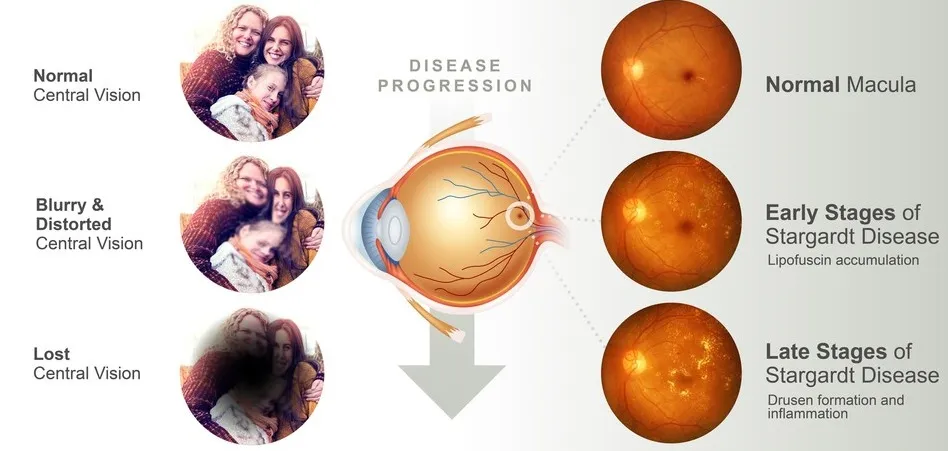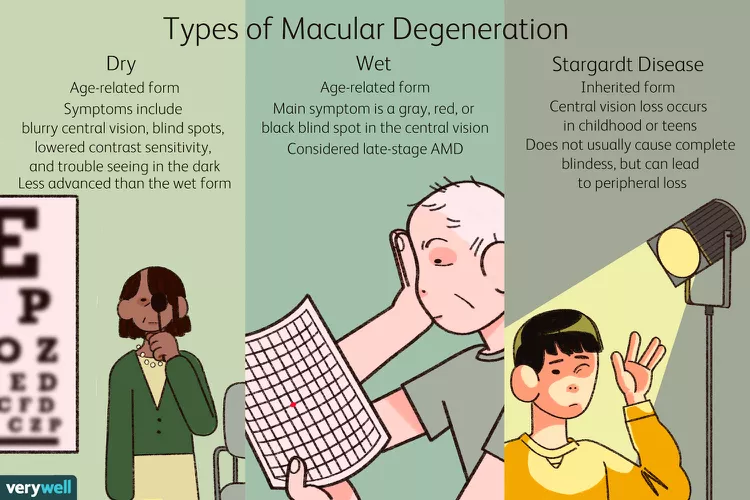Inherited Eye Disorder: Understanding Stargardt Disease
In a world where genetics play a significant role in our health, inherited eye disorders are a topic of increasing importance. Among these conditions, Stargardt Disease stands out as a prime example. This blog post delves into the genetic intricacies of Stargardt Disease and provides insights on how to manage this inherited eye disorder.
What is Stargardt Disease?
Stargardt Disease, often called Stargardt macular dystrophy, is an inherited eye disorder that primarily affects the macula, the small but critical central part of the retina. The macula is responsible for sharp central vision, and damage to this area can lead to vision loss. Stargardt Disease is typically caused by mutations in the ABCA4 gene, which plays a crucial role in the visual cycle. It is an autosomal recessive condition, meaning that both parents must carry a mutated gene for a child to inherit the disease. This genetic quirk underlines the importance of understanding the genetics of inherited eye disorders.

Signs and Symptoms
Understanding the signs and symptoms of Stargardt Disease is crucial for early detection. While the disease varies from person to person, common indicators include:
- Blurred or distorted central vision
- Difficulty with reading or recognizing faces
- Reduced color perception
- Light sensitivity
- Difficulty adapting to low-light conditions
These symptoms can develop in childhood or early adulthood, emphasizing the importance of timely diagnosis and intervention.
Diagnosis and Detection
Diagnosing Stargardt Disease involves a comprehensive eye examination, including:
- Visual acuity tests
- Fundus autofluorescence imaging
- Optical coherence tomography
- Genetic testing
A genetic test is particularly important in confirming the presence of ABCA4 gene mutations. For individuals with a family history of Stargardt Disease, genetic counseling is advised to assess the risk of passing the condition to their offspring.

Treatment and Management
Currently, there is no cure for Stargardt Disease, but several strategies can help manage the condition and improve the quality of life for those affected:
- Lifestyle Adjustments: Patients are encouraged to protect their eyes from excessive sunlight by wearing sunglasses and hats. They should also avoid smoking, which can exacerbate vision problems.
- Low-Vision Aids: Various assistive devices, such as magnifiers, screen-reading software, and special lighting, can help individuals with Stargardt Disease to read, write, and navigate their surroundings more comfortably.
- Research and Clinical Trials: Ongoing research offers hope for future treatments, including gene therapies and stem cell approaches. Clinical trials are actively exploring new therapeutic options.
Living with Stargardt Disease
Coping with an inherited eye disorder can be challenging, but there is support available. Connect with local or online support groups and organizations focused on vision impairment. Sharing experiences and advice with others who face similar challenges can make a significant difference in managing Stargardt Disease.
Preventive Measures
For individuals with a family history of Stargardt Disease, genetic counseling is key. It can provide guidance on family planning and the risk of passing the condition to children. By raising awareness about the genetic aspects of Stargardt Disease, we can promote early detection and preventive measures within affected families.

Inherited eye disorders like Stargardt Disease highlight the importance of genetic understanding and early detection. While there is no cure yet, advancements in research and the availability of support and low-vision aids offer hope for those living with this condition. By shedding light on the genetic factors behind Stargardt Disease, we can empower affected individuals and their families to make informed decisions and manage the disorder effectively.




